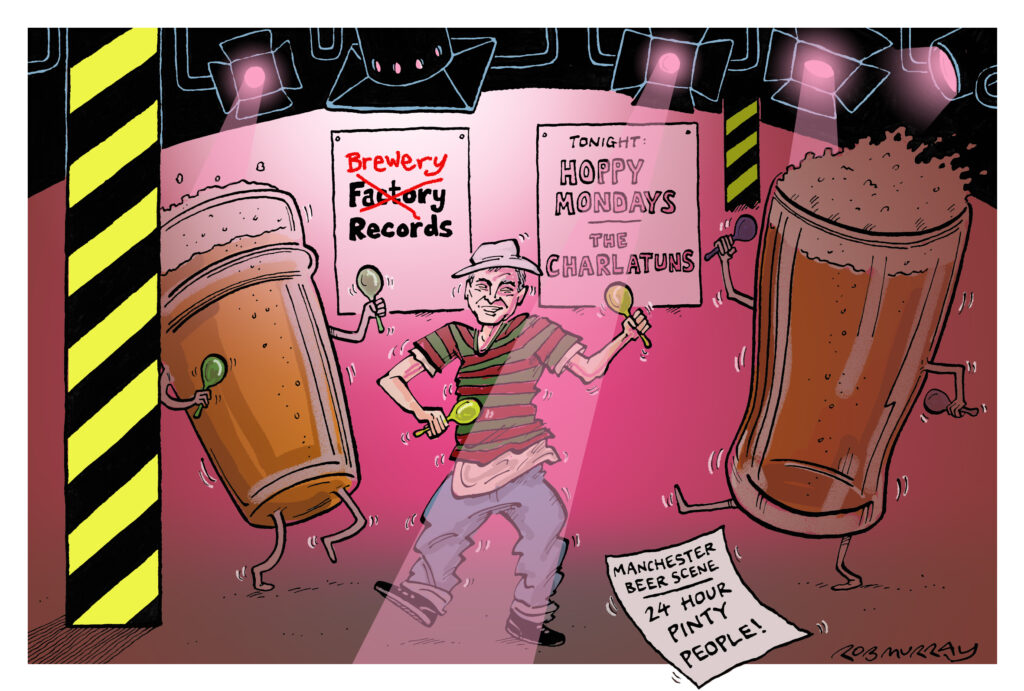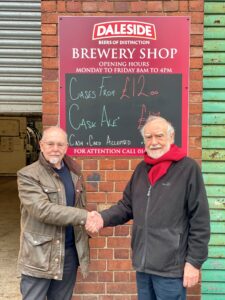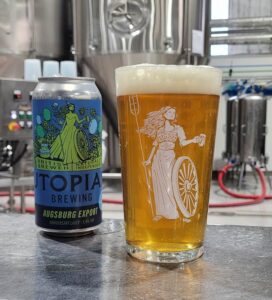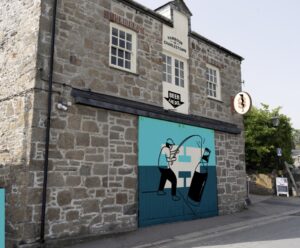Does regionality still exist in beer? Is it on the way back? And how much of regionality is down to the brewery’s house style? John Keeling, the former head brewer at London-based Fuller’s, looks at how regionality in beer has changed through the lens of his own journey in brewing.
I have been working in the beer industry since the age of 17 and have been both a keen observer and participator in the delights of the “beer scene” since.
When I did start drinking, the beer of choice was cask bitter in all its myriad forms. I was also an underage drinker so beggars can’t be choosers on where I had to drink so that meant I also had to drink keg bitter, Guinness and the occasional lager (usually after playing football, mainly to quench my thirst before going back to ale).
I never really got on with Guinness and found it very heavy to drink but could manage a couple or so. Later in life I discovered London Stout (thank you craft) a much better beer in my opinion.
After my early foray into beer, I settled down into mainly drinking cask bitter and acquired a taste for Boddingtons and Robinsons Best. Both bitters and both very different.
I then tried Holts (truly a “bitter” bitter), J W Lees Bitter, Hyde’s, Marston’s and Oldham’s bitter. Marston’s introduced me to the “Burton snatch” and on form was truly magnificent.
Well, you could say that about all cask had to be on form for it to earn the description magnificent. I was lucky that throughput in my local pubs meant that nearly always, the beer was on form.
The other thing worth noting, is that I could drink all those beers simply by drinking in my local pubs.
Indeed, I could have also tried Allied, Whitbread, Bass, Wilsons (owned by Watney’s) too, but rarely did.
Manchester was very lucky in its choice of beer in that it was the last major city to be targeted by the so called “big six”.
The big six were Whitbread’s, Allied, Bass, Guinness, Watney’s and Scottish & Newcastle. They had been busy in the sixties and in the seventies buying up breweries mainly for their pubs and then closing the brewing side of the business.
Although Bass had taken over Cornbrook and Watney’s. Wilsons and most other family brewers were left alone. Which left the Manchester drinker with a fantastic range of beers to try.
It was about this time that my career in brewing started and I joined Wilsons which gave me an insight and an interest in how beer was brewed as well as how it tasted.
Also, with my friends, we started travelling up and down the country indulging our fast-growing love of beer.
Naturally we tried the cask bitter, but they did not taste the same as any of the Mancunian versions.
I enjoyed this variation and can remember memorable trips to London, trying Fuller’s and Young’s, a great trip to Cambridge where Greene King and Tolly Cobbold were tried.
Going over to Yorkshire to try Tetley’s and Timmy Taylors. The most surprising area was the midlands where mild was so popular!
The next phase of my career was to go to Heriot Watt in Edinburgh and there I was introduced to another ball game – Scottish Beer!
It was of course during that period we saw the rise of CAMRA.
Now we all know that the work that they did to rescue cask beer but they also promoted discussion about beer and began to approach beer with the seriousness that wine experts talked about wine.
One of these discussion points really intrigued me which was the regionality of beer. Why did London bitter taste different to Manchester beer, why did Yorkshire beer taste different to Midland beer?
This discussion coupled with my new-found knowledge in how beer was made led to me spouting many a rubbish theory about beer in the pubs of Manchester. Nothing changes then, I hear you say.
“Eight pints later my friends had come to the conclusion that London beer wasn’t so weak after all”.
Now just recently I have been reading Matt Curtis’ views on regionality in craft beer and using the excellent beers of Thornbridge as an example of regionality in craft beers today.
As all good writers do, it made me think.
The first thing I thought was I hope that it is true. I could then travel up and down the country and relive my youth trying to find the new regionality in beer.
A bonus would, of course, be still to drink the old regionality in the form of the family brewers. I can’t wait for that pint of Landlord in Yorkshire or Harvey’s in Sussex.
I would say that a major contributor to the differences in beer is the yeast but is that more to do with house style rather than regionality.
Indeed, when does house style become regionality? One of the problems with craft beer is the dominance of the hop in the flavour. That has led to a lot of beer with very similar tastes.
This has led to no discernible house character between breweries.
Don’t get me wrong. Craft has been fantastic for the beer industry but not everything in the garden is rosy.
I also think we have entered a new phase of craft beer where beers are not overwhelmed by one big flavour and perhaps Matt is right, regionality in beer is re-emerging.
Growing up, one of the popular misconceptions amongst us Mancunians was that all London beer was weak and watery.
I managed to disabuse my friends of this notion one evening, during the early months of my career at Fullers.
A bunch of my friends had come up for the match at Spurs and were staying in my flat, we decided to go for a few beers Friday the night before the game on Saturday.
Walking in the pub they asked me what do people drink in a Fullers pub? I replied “light and bitter”. They did not know what a light and bitter was, I explained that it was half an ESB topped up with Golden Pride.
The drink I declared the locals referred to as “blood and bitter”. I also explained to them that because I was a Fullers brewer, I had to drink the Chiswick. Eight pints later my friends had come to the conclusion that London beer wasn’t so weak after all.
In fact, I was the only one who ate breakfast the next day or bothered to get out of bed before midday.









